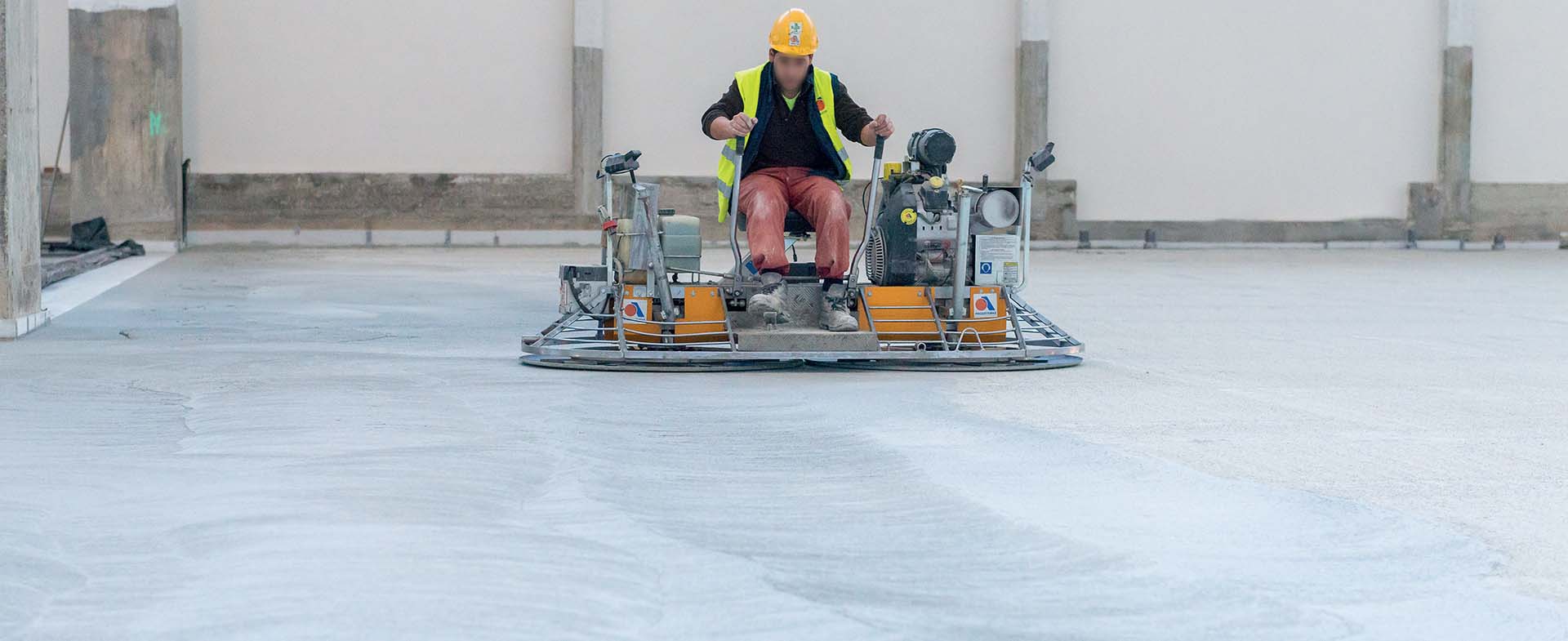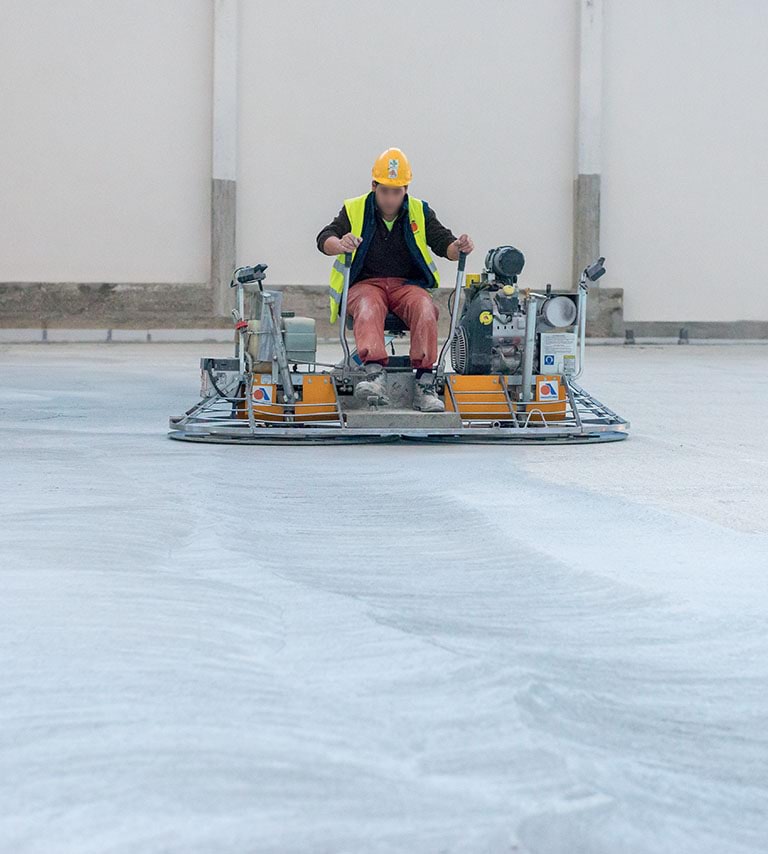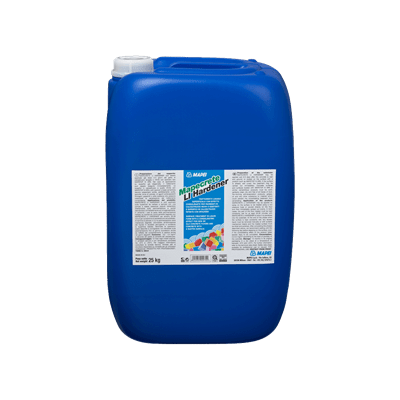

Hardeners and surface protectors
Two product families to improve performances and enhance the durability of concrete floors.
Two product families to improve performances and enhance the durability of concrete floors
A wide range of products to finish concrete floors
- surface hardeners: products and solutions designed to increase the wear-resistance of a floor’s surface, available in either powder or liquid form;
- surface protectors: products and solutions designed to protect the surface of existing floors to prevent the possible penetration of aggressive substances or substances that could modify them aesthetically.
A wide range of hardeners
In the first family, we may separate the products into “dry-shake” and “liquid” surface hardeners. The first type hardeners are ready-to-use anhydrous mixtures of hydraulic binders, special additives, fibers and selected, particularly hard aggregates applied on the floor using the “broadcast” method: they are distributed on the surface of placed concrete once it has set and been smoothed over and are incorporated into the surface of the concrete with a power-trowel with rotating blades (known as a “helicopter”). This creates a hard, smooth, compact and highly resistant surface on internal and external floors. These products are available in various colours so floors can also have a highly attractive finish.
Dry-shake surface hardeners are mainly divided according to the type of aggregate they contain, which characterises their final surface hardness and resistance to wear. This leads us to having the following families of Mapei hardeners:
- MAPETOP N: dry-shake hardeners made from natural aggregates, more often than not quartz, for industrial and commercial floors;
- MAPETOP S hardeners contain extremely hard synthetic aggregates and are suitable for withstanding stresses and loads on industrial floors subjected to severe service conditions, such as intense vehicle traffic (including vehicles with very hard wheels) or to objects being dragged across them frequently;
- MAPETOP M hardeners contain metallic aggregates, for the surface of floors subjected to extreme service conditions and frequent impact loads.
In the same family there are also liquid surface hardeners, silicate-based solutions that may also contain additives and polymers. These are applied on hardened floors and, thanks to the reaction that takes place between the silicate and the free lime in the cementitious matrix, their hardness and resistance to wear increase considerably, they have lower penetration of liquids and practically no formation of dust while in service. These products are suitable for new and existing floors and are the perfect complement to dry-shake hardeners from the MAPETOP line.
This family consists of mainly lithium silicate-based products, such as:
- MAPECRETE LI HARDENER for industrial and commercial floors;
- MAPECRETE LITHIUM+, which makes treated surfaces highly water-repellent;
- MAPECRETE LITHIUM PROTECTOR, which creates a protective surface film that can then be given a shiny finish by going over the surface with a high-speed polishing machine;
- MAPECRETE LITHIUM CURE: a perfect combination between surface protector and curing aid for freshly placed concrete.

Effective final protection
The range of Mapei solutions available is completed, therefore, by the second family of products, which protect surfaces but without significantly increasing their hardness. This protective effect may be through the formation of a film, such as with MAPECRETE U-PROTECTOR, or with products that penetrate into the substrate to make it water and/or oil-repellent, such as MAPECRETE CREME PROTECTION and MAPECRETE STAIN PROTECTION; the latter two products are not visible once applied. These solutions are perfect for treating polished cementitious substrates, such as “Terrazzo-alla-Veneziana” floors and may be used with self-levelling cementitious products from the ULTRATOP range.


















